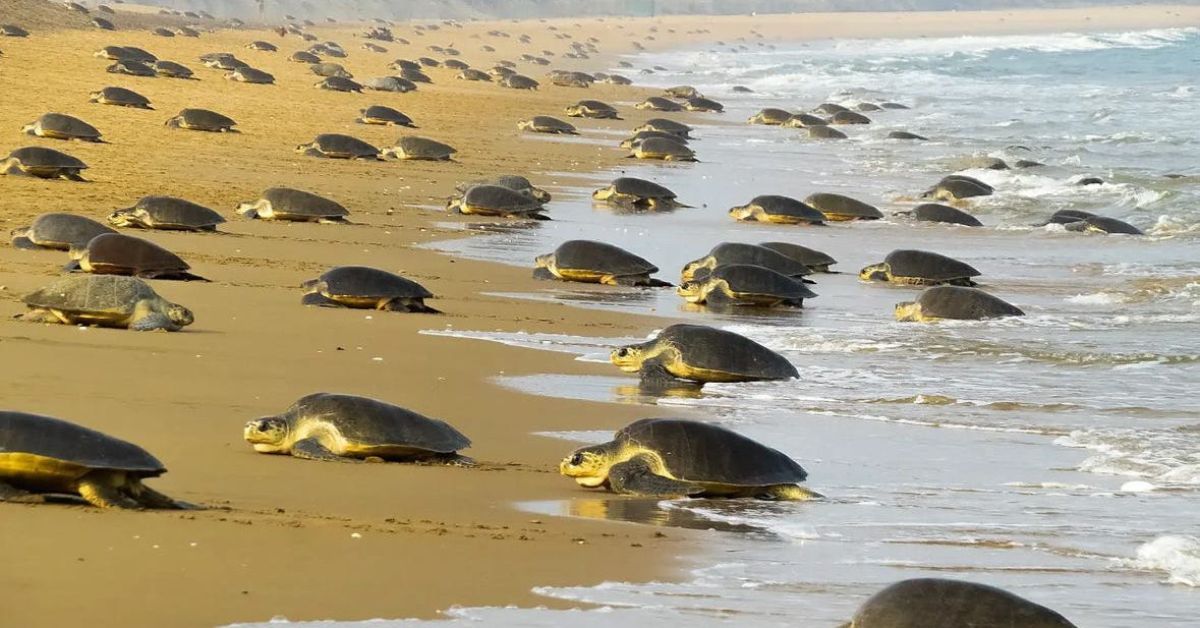Olive Ridley Turtles
About olive ridley turtles
- The olive ridley turtle is considered the smallest and most abundant of all sea turtles found in the world.
- Olive ridleys are found only in warmer waters, including the southern Atlantic, Pacific and Indian Oceans.
- They are listed as vulnerable in the IUCN Red list.
Mass nesting
- These turtles spend their entire lives in the ocean, and migrate thousands of kilometers between feeding and mating grounds in the course of a year.
- The Olive Ridley Turtles come to the beaches of Odisha coast annually between November and December and stay on until April and May for mass nesting. Such mass nesting events are called arribadas.
- While states like Maharashtra, Goa, and the offshore Andaman islands witness sporadic nesting of olive ridley turtles, Odisha is the only state in India that sees mass nesting of olive ridley turtles.
- Gahirmatha beach in Odisha is acclaimed as the world’s largest-known nesting site for the marine species. Apart from Gahirmatha, turtles turn up at the mouths of Rushikulya and Devi river (both in Odisha) for mass nesting.

Threats
- The Olive Ridley’s face serious threats across their migratory route, habitat and nesting beaches, due to human activities such as turtle unfriendly fishing practices, development and exploitation of nesting beaches for ports, and tourist centers.
- Though international trade in these turtles and their products is banned, they are still extensively poached for their meat, shell and leather.
- All the five species of sea turtles occurring in India, including the Olive Ridley turtles, are legally protected under Schedule I of the Wildlife Protection Act, 1972 and Appendix I of the CITES Convention which prohibits trade in turtle products.
- As the nesting period stretches over six months, the Indian Coast Guard undertakes the Olive Ridley Turtle protection program under the code name ‘Operation Olivia’ every year.
Subscribe
Login
0 Comments
